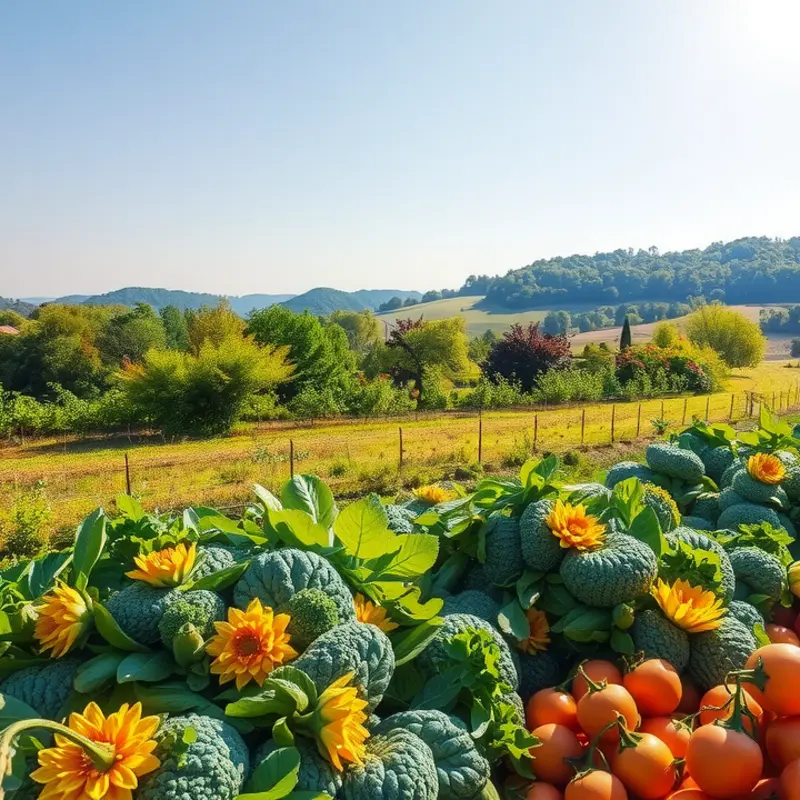Mastering sauce finishing techniques can elevate any dish, making it more vibrant and delicious. Whether you’re a beginner or an experienced cook, these simple methods will add depth and character to your plates. By incorporating a few fast techniques, you’ll impress family and friends—transforming everyday meals into gourmet experiences. Dive into the world of sauces and discover how quick adjustments can bring out the best in your cooking.
Boosting Flavor with Fresh Ingredients

Elevating a sauce from good to great often comes down to the final flourish before serving. Fresh ingredients play a pivotal role in achieving this transformation. They add dimensions of flavor and visual appeal, completing your dish with vibrance. Fresh herbs like basil, parsley, cilantro, and dill can imbue your sauce with distinctive flavors and textures. When using these herbs, consider them as more than mere garnishes. They interact with the sauce, infusing it with aromatic oils released by gentle tearing or chopping. Finely mince or chiffonade them just before serving to capture their essence without overpowering other flavors.
Citrus juices reign supreme when aiming to incorporate an acid element that brightens any sauce. Freshly squeezed lemon, lime, or orange juice introduces a zesty tang that balances richness. The trick is to add these juices at the very end, as prolonged heat can make the flavors harsh or bitter. A mere dash of citrus can transform a rich béchamel into an ethereal companion for seafood or roasted chicken.
Another fresh touch to consider is aromatic roots and bulbs, like garlic, ginger, and scallions. While their flavor profiles differ, they share the ability to inject a pungent complexity. Crushed garlic can be stir-fried into an Asian-inspired sauce, while shredded ginger can provide warmth to a tomato-based reduction. The white and green parts of scallions deliver contrasting flavors—the greens adding mildness, while the whites bring a sharpness that enhances soy-based sauces.
Fruits can also contribute to a sauce’s allure. A puree of ripe mango or a handful of finely chopped strawberries can sweeten and color your creation naturally. These elements are particularly effective in sauces intended for grilled meats or desserts. Welcome the fruit’s natural sugars to caramelize slightly under heat, enriching both taste and color.
Do not overlook the power of flower petals like nasturtium or rose. Nasturtium contributes a peppery kick reminiscent of radishes, while rose petals impart an exotic floral note. Both of these fresh ingredients can bolden mild sauces, preparing them for dishes that are young and vibrant.
Incorporating these bright ingredients is not without its challenges. Timing is key, as overcooking can dull both flavor and color. It’s essential to taste constantly during the finishing process, ensuring the balance remains harmonious. Also, remember that composition, particularly in relation to ingredient amounts, dictates success. A little can go a long way, so start sparingly.
For additional insights into enhancing flavors while reducing reliance on added salt, you might find this guide on Flavor Boosters Without Salt helpful. It explores alternative ways to invigorate your dishes naturally.
Fresh ingredients offer a conduit to quick yet profound changes in your culinary outcomes. Not only do they brighten flavors, but they also contribute visual cues that make dishes inviting. By harnessing their potential, any home chef can craft sauces that uplift a myriad of meals, making each dish a reflection of creativity and thoughtful design.
Quick Techniques to Add Depth and Texture

Transforming a basic sauce into a culinary masterpiece hinges on understanding how to manipulate depth and texture. Here, we’ll delve into practical, quick techniques that can elevate any sauce.
Emulsifying is a key technique used to create a smooth and cohesive sauce. In simple terms, emulsification involves combining liquids that typically do not blend, like oil and vinegar. The trick is to slowly whisk or blend one liquid into another while dispersing the fat into tiny droplets. This process not only adds an unctuous texture but also enhances flavor absorption. Use egg yolks or mustard as natural emulsifiers to stabilize your mixture and enrich its body.
Adding fats strategically can transform the sauce’s mouthfeel without overwhelming the palate. A touch of butter whisked in at the end of cooking lends creaminess and subtlety, while oils such as olive contribute a silky sheen. To avoid greasiness, incorporate fats gradually with constant stirring until the desired texture is achieved.
Umami is the secret to a complex, savory depth. High in umami, soy sauce can be added sparingly to enrich a sauce’s flavor profile. Similarly, cheeses such as Parmesan can introduce both saltiness and depth, turning a simple tomato sauce into something extraordinarily rich and flavorful. Grate cheese finely to ensure it melts uniformly and combines seamlessly.
Beyond familiar ingredients, consider anchovy paste or miso for an umami punch that doesn’t necessarily overpower. These umami bombs not only introduce depth but also amplify accompanying flavors without making your sauce taste fishy or fermented.
To add texture, consider using bits of cooked garlic, shallots, or even finely chopped nuts. Nuts like almonds or walnuts can be toasted and blitzed to create a gritty contrast when stirred into a sauce. Such additions can make each bite varied and interesting, which is particularly appealing in vegetarian dishes.
Herbs and spices are also essential for complex flavors. Fresh herbs should be added towards the end of cooking to maintain their vibrant flavors and colors. Dried spices, on the other hand, benefit from blooming in warm oil at the start, delivering a deeper, more rounded flavor profile.
Each of these techniques, from emulsification to strategic additions of fats and umami, contributes to a richer, more indulgent sauce that captivates. For more insights into choosing flavor enhancers without relying on salt, check out this guide. Your mastery of these techniques offers limitless possibilities for crafting sumptuous sauces that stand out at any meal. Whether you’re preparing a quick weekday dinner or an elaborate feast, the nuanced depth and texture of your sauce will leave a memorable impression on your guests.
Final words
With just a few fast sauce finishing techniques up your sleeve, you can transform even the simplest meals into delightful feasts. Adding fresh ingredients, adjusting texture, and enhancing flavors can elevate your dishes, making them both visually appealing and delicious. Remember, culinary skills develop with practice, so don’t hesitate to experiment with your sauces and find what suits your palate best. By incorporating these practical tips into your cooking routine, you’ll soon discover how easy it is to create mouthwatering meals that leave a lasting impression.







